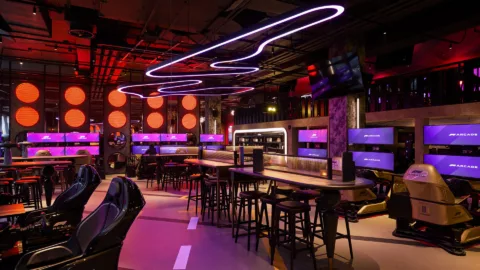Lighting Trends for 2015
Looking ahead at what 2015 might bring to the lighting industry is always a challenge, especially considering the speed at which the technology of lighting, lighting manufacture and the dynamic nature of lighting design evolves. But while it may be difficult to gaze into the crystal ball with certainty, it is possible to look at wider trends within the industry that have been forming over the past few years or more.
The increasing affordability of LED
LED has been the hot topic in the lighting industry for a number of years, but until now its adoption by both lighting designers and consumers has been constrained by its high price. Expect this to change in 2015 when costs are likely to fall and architects and designers will begin to choose LED. This increased affordability is being driven by breakthroughs in the amounts of lumens each LED chip can produce, which in turn means fewer chips are needed in each lamp, lowering the price per unit considerably. Heat management advancements have also reduced the cost of lighting manufacture, to the point where some experts are expecting a reduction in unit price of as much as 30% this year.
The Year of the Lamp
With the lower price of LED technology and growing demand for energy efficient lighting, 2015 will see a trend for LED lamps that also deliver beauty. Last year saw LED lamp manufacturers embracing new materials like bronze and brass in lamp design as they realised focusing on thermal management and increasing lumens was only half the picture. This year, with the technological advancements made, it is time for design aesthetics to come to the fore.
Increased Recycling Targets
The Environment Agency is likely to increase recycling targets this year and understandably this will impact how lighting producers and consumers dispose of end of life lighting products. In tandem, there is a growing public understanding of the need to recycle lighting products which will likely mean a requirement for better infrastructure to cope with demand. Also in 2015, lighting manufacturers will need to look at how they report products that can be used for both B2B and B2C purposes, as from 1st January 2016 any dual use products will be classified as B2C products, which will have compliance ramifications.
Designing for the Long Game
As LEDs enter the mainstream and are widely used within interior design, architects and designers in the next year will learn how best to make use of the flexibility that LEDs offer. Designers will also have to plan carefully how their creations are likely to stand the test of time, as LEDs can last up to a decade before being replaced. Some experts are even suggesting that the extended life of LEDs in comparison to other types of bulb will mean the practice of replacing burnt out bulbs will disappear, and that people will be more inclined to replace entire lighting set ups every decade.
Earlier Lighting Specifications
As LED proves increasingly flexible in the ways it can be used, and light source delivery becomes more versatile, incorporating it as early as possible in the design process will be vital. The result of putting lighting at the start of the specification process however is that briefs will have to be clearer, placing more demands during the planning phases of projects. Power over Ethernet technology, the practice of running electrical power through data cabling, is also likely to have an impact on the importance of including lighting within the specification, especially as they will now have to be considered as part of the cabling design, very early in the build process.
Dynamic Lighting
It has been established for some time that lighting impacts mood and even productivity so in 2015 don’t be surprised if some lighting designers pursue solutions that deliver more than just lumens. For example, within the education sector studies have shown that the type of lights will impact the ability of classes to learn, so expect educational spaces to utilise certain types of light. The use of ‘smart’ or ‘dynamic’ lighting however goes further, and in the next year designers may want to consider how the flexibility of LED could enable them to change people’s mood or create lighting effects that are chosen based on the function of that specific room. You can learn more about how light can be used dynamically by reading our Power of Lighting blog.
Undoubtedly this year will once again see some interesting developments in the world of lighting. Many will be driven by the reduced costs and increased flexibility of LEDs, but it is also worth considering what role will be played by lighting as our homes and buildings become more technologically integrated.
